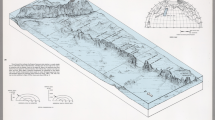Abstract
The threshold separation method is an image segmentation technique that is divided into several types according to the gradation value. It is a classification method based on image histogram segmentation. The purpose of the image threshold is to divide the entire pixel into a region having similar properties according to the gradation level. Each area after separation will match the real object, and each area will have the same internal properties, and this property is different from the surrounding area. The coral reef ecosystem consists of various components, such as coral groups, algae, boom, fish and microorganisms, and non-biological components, which forms a connection with each other. Coral biological communities are one of the largest varieties and the most abundant community in the marine environment. The defined coastal area refers to the region of the coastline and is divided into three levels according to the administrative region: province, city and district. The coastal area of the first line is mainly located in coastal provinces, and autonomous regions. The tourism public service system is not a new research topic. Instead, tourism public services have been conducted in the government, academia and tourism. This paper mainly analyzes the relevant theoretical concepts and public service tourism systems on public service tourism under the premise of intelligent information and tourism.



















Similar content being viewed by others
Change history
04 November 2021
This article has been retracted. Please see the Retraction Notice for more detail: https://doi.org/10.1007/s12517-021-08705-9
28 September 2021
An Editorial Expression of Concern to this paper has been published: https://doi.org/10.1007/s12517-021-08471-8
References
Ahmad S (2003) A comparative study of structural styles in the Kohat Plateau, NW Himalayas, NWFP, Pakistan. Type. PHD thesis, University of Peshawar, Peshawar
Ahmad S, Hamidullah S, Khan MI, Himalaya J (2004) Structural transect of the western Kohat fold and thrust belt between Hangu and Basia Khel, NWFP, Pakistan. Proc. Ann. Tech. Conf. (ATC), Islamabad p 37–50
Ali A (2007) Structural evaluation of the western Kohat Foreland Basin using modern structural restoration techniques (M.Phil. Thesis), Uni. of Pesh. KP. Pakistan
Bard JP (1983) Metamorphism of the obducted island arc: example of Kohistan sequence in Pakistan Himalayan Collided Range. Earth Planet Sci Lett 65:133–144
Burg J-P, Célérier B, Chaudhry NM, Ghazanfar M, Gnehm F, Schnellmann M (2005) Fault analysis and paleostress evolution in large strain regions: methodological and geological discussion of the southeastern Himalayan fold-and-thrust belt in Pakistan. J Asian Earth Sci 24(4):445–467
Chamberlain CP, Zeitler PK (1996) Assembly of the crystalline terranes of the northwestern Himalaya and Karakorum, northwestern Pakistan. In: Yin A, Harrison TM (eds) The tectonic evolution of Asia. Cambridge University Press, New York, pp 138–148
Davies L (1930) The fossil fauna of the Samana Range and some neighbouring areas. Part I: an introductory note, Geol. Survey India, Mem. Palaeont., NS, 15, 15
Fatmi AN (1974) Lithostratigraphic units of Kohat-Potwar Province. Print. Corporation of Pakistan Press, Indus Basin
Fraser JE, Searle MP, Parrish RR, Noble SR (2001) Chronology of deformation, metamorphism and magmatism in the southern Karakorum Mountains. Geol Soc Am 113:1443–1455
Gansser A (1964) Geology of the Himalayas. In: Interscience Publishers London etc. (J.Wiley & Sons), pp 1–289
Gansser A (1980a) The division between Himalaya and Karakorum Geological Bulletin. University of Peshawar 13:9–22
Gansser A (1980b) The significance of the Himalayan suture zone. Tectonophysics 62(1-2):37–52
Gee E (1945) The age of the saline series of the Punjab and of Kohat, vol 14. National Academy of Science Proceedings
Ghauri AAK, Rchman O, Rchman SS (1983) A new structural model of the southern slopes of Kotal Pass, Kohat Division, NWFP, Pakistan; the problem of north-verging folds. Gcol Bull Univ Pcshawar 16:97–104
Grelaud S, Sassi W, de Lamotte DF, Jaswal T, Roure F (2002) Kinematics of eastern Salt Range and South Potwar basin (Pakistan): a new scenario. Mar Pet Geol 19(9):1127–1139
Hamidullah S, Onstot TC (1992) Ar40/Ar39 evidence for late Cretaceous formation of the KIA, NW, Pakistan. Kashmir J Geol 10:105–122
Jan MQ, Asif M (1981) A speculative tectonic model for the evolution of NW Himalaya and Karakoram. Geological Bulletin of the University of Peshawar 14:199–201
Johnson GD, Powell CMA, Veevers JJ (1976) Spreading history of the eastern Indian Ocean, and greater India’s northwards flight from Antarctica and Australia. Geol Soc Am Bull 87:1560–1566
Khan AA (2011) Structural analysis of the Trans-Indus ranges: implications for the hydrocarbon potential of the NW Himalayas, Pakistan. Unpublished Ph.D. thesis, National Centre of Excellence in Geology, University of Peshawar, Pakistan
Khan KAT, Abbassi IA (1990) Structures in the hanging wall of Main Boundry Thrust: post-folding thrust and normal faults from the Kotal Pass area Kohat Ranges N. Pakistan. Gcol Bull Univ Peshawar 23:175–186
Khan M, Ahmed R, Raza HA, Kemal A (1986) Geology of petroleum in Kohat-Potwar depression, Pakistan. AAPG Bull 70(4):396–414
LeFort P (1975) Himalayas: the collided range, present knowledge of the continental arc. Am J Sci 275A:1–44
Malinconico LL Jr (1986) The structure of the Kohistan arc terrain in northern Pakistan as inferred from gravity data. Tectonophysics 124:297–307
Author information
Authors and Affiliations
Corresponding author
Ethics declarations
Conflict of interest
The author declares no competing interests.
Additional information
Responsible Editor: Sheldon Williamson
This article is part of the Topical Collection on Environment and Low Carbon Transportation.
This article has been retracted. Please see the retraction notice for more detail: https://doi.org/10.1007/s12517-021-08705-9"
About this article
Cite this article
Yan, T. RETRACTED ARTICLE: Cultural changes in coral community based on image segmentation and travel public service in coastal areas. Arab J Geosci 14, 1476 (2021). https://doi.org/10.1007/s12517-021-07712-0
Received:
Accepted:
Published:
DOI: https://doi.org/10.1007/s12517-021-07712-0




